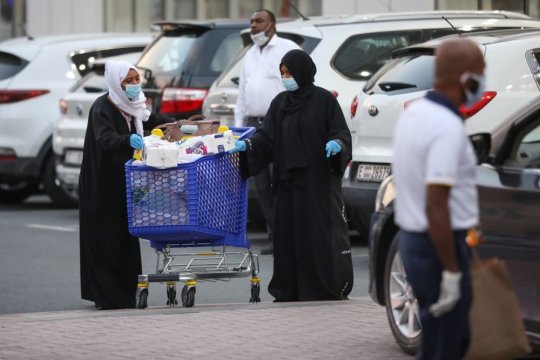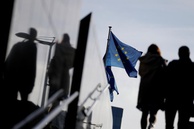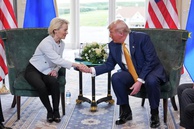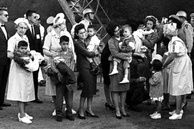The recent declaration of autonomy in southern Yemen and Khalifa Haftar's declaring himself the ruler of all Libya once again drew the world’s attention to the phenomenon of separatism. This phenomenon is certainly not new, amply exemplified by events in Scotland, Catalonia, Flanders and South Tyrol. In Europe, the problem is normally discussed and resolved on a legal basis, if not always peacefully. When it comes to Asia and Africa, the chances of legal settlement of such issues are even lower.
Back in the early 1990s, Bernard Lewis, a renowned expert on Islamic civilization, foresaw the breakup of a number of states in the Greater Middle East. Later, in 2006, Armed Forces Journal published the “future” map of the region, drawn up by the US military expert, Lieutenant Colonel Ralph Peters, who predicted the division of Iraq into Kurdish, Sunni and Shiite states and the emergence of a number of countries on parts of the territories of today's Turkey, Iran and Saudi Arabia.
The events of the largely foreign-influenced “Arab Spring” gave a strong boost to the centrifugal processes in the region. In some places it resulted in the downfall of political regimes, in others it led to their transformation. Armed conflicts flared up in Syria, Libya, Iraq and Yemen, which continue to this day and there are no guarantees that before very long these countries’ borders won’t change.
The start of the leap year 2020 was marred by the outbreak of the coronavirus epidemic, followed by an oil price collapse. According to the World Health Organization, the health care systems of developing countries are unable to cope with the pandemic on their own due to the lack of medical facilities, equipment, medical staff and even basic protective gear. While developed countries have allocated huge financial resources to check the spread of COVID-19, poor countries, most of which are struggling for survival, cannot afford the introduction of long-term quarantine, nor do they have enough money to assist their citizens. Moreover, the real picture of the spread of the coronavirus infection in developing countries remains pretty dim, meaning that the socio-political consequences of the pandemic for these countries can be disastrous.
The dramatic fall in oil prices has not only dealt a severe blow to the economies of the oil-producing countries, sharply choking off their budget revenues, but it also exacerbated the situation in the countries that survive largely on money transfers from their citizens working abroad and assistance from oil and gas-rich neighbors.
In addition, the region has enough old problems to deal with.
Yemen, which is a patchwork of various tribes and tribal unions, was established in its present form in 1990 as a union of North and South Yemen (or rather as a result of the annexation of the country’s southern regions by the North). According to the UN, the country experienced a genuine “humanitarian catastrophe” even before the advent of the coronavirus and collapsing oil prices.
Just four years after the unification, the so-called Democratic Republic of Yemen was proclaimed in the country’s south, but existed only a couple of months. In 2014, an armed conflict erupted (and still continues) among the northerners themselves - the Shiite group Ansar Allah and the central government. In March 2015, an international Sunni coalition led by Saudi Arabia joined the fight against the Iranian-backed Shiites. In addition, the central government has since 2007 been confronted by yet another secessionist organization, now in the south - the so-called Southern Transitional Council, which recently declared self-governance of the territories under its control.
Faced with such a disturbing reality, the governors of several provinces, including the most economically developed ones, stop making financial transfers to the state budget and host foreign ambassadors and foreign military delegations.
Iraq is a country characterized by significant ethno-confessional diversity with almost two-thirds of the population being Shiite Arabs, most of them pro-Iranian due to the fact that during the long reign of the Ba'athists (members of the Arab Socialist Renaissance Party - PASV, or Ba'ath), Shiite Arabs were not considered as 100-percent citizens of the country. During the 2003 intervention by a US-led international coalition, many Shiite organizations allied themselves with the Anglo-American forces. During the subsequent occupation of Iraq, the local administration assumed real power over the country’s Shiite south and to this very day the central government in Baghdad does not completely control the southern governorates.
During the 1960s, the Kurds, who predominantly lived in northern and northeastern Iraq, mounted an armed struggle for independence. The government’s brutal, including with the widespread use of chemical weapons, crushing of the movement in 1987-1989 made it absolutely inacceptable for many Kurds to keep living in the same country with the Arabs, even after Iraqi Kurdistan was granted the status of autonomy in the wake of Operation Desert Storm. The invasion by the Western coalition forces allowed the Kurds not only to establish a regional government, but also to phase out the local Arab population and occupy a number of oil-rich regions, which the Kurdish leaders said had been taken away from them by the regime of Saddam Hussein.
An independence referendum for Kurdistan Region of Iraq, which was an attempt to finally legitimize the Kurdish statehood failed however, even though an overwhelming majority of votes were cast in favor of independence. At that time, the prospect of an independent Kurdistan did not sit well with either Iran and Turkey (as it would sent a “wrong” signal to the Kurds living there), or the United States, who believed that the Kurdish state in Iraq could lead to the emergence of a pro-Iranian Shiite entity in the south, including in the strategic Basra oil field.
Today, Sunni Arabs fear (rightly or not) that the final withdrawal of US troops from Iraq will make them defenseless both against the Kurds in the north and the Shiites in the south, leaving them one on one with Iran, which Iraq fought against during the war of 1980-1988.
The ethno-cultural makeup in Syria is equally diverse, with over 70 percent of Syrians being Sunni Arabs and about 15 percent - Shiites, including the Alawites, whose affiliation with Islam is questioned by many. After the country gained independence in 1946, Syrian army officers and members of the state bureaucracy were traditionally and overwhelmingly recruited from Alawites, much to the chagrin of the country’s majority Sunnis, many of whom still support the armed opposition.
In 1920, France carved up the mandated territory of the Middle East entrusted to it by the League of Nations into four zones: Greater Lebanon, the State of the Alawites, the State of Aleppo and the State of Damascus. The Jabal Druze State and the Sanjak of Alexandretta, which broke away from Turkey before WWII, were added the following year. However, France later ended its experiment on ethno-confessional division of the region, and the Alawite clan of the Assads, backed by the Arab Socialist Renaissance Party, has thus ruled Syria since 1963.
The "Arab Spring" all but destroyed Syria as an independent state, which survived only thanks to the political and military assistance of Russia and Iran.
The Kurds – the largest ethnic minority in Syria - live in the northeast of the country and make up about 10-12 percent of the population. After decades of discrimination (until recently, the Kurds did not even have Syrian citizenship), big and small revolts, Kurdish politicians, taking advantage of the chaos of the civil war, established regional authorities virtually independent of Damascus. Then, due to their support for the Western coalition fighting ISIL (ISIS, IS, Islamic State – a terrorist entity outlawed in Russia) and apparently heeding the advice of US instructors, the Kurdish groups, like Iraqi Peshmerga, occupied a number of the country’s traditionally Arab oil-bearing territories.
The Syrian Kurds are being sponsored by the United States, which is not going to cede to anyone its control neither over the territory, nor the local administration and militia, let alone the oil fields.
Syrian Turkmens (Turkomans) are a sizeable ethnic group, who are under the watchful care of Turkey.
For Christians (about 6 percent of the population) and Druze (about 3 percent), the threat posed by the Sunni Islamists borders on genocide, hence their unconditional support for the central government.
The territory of modern Libya consists of three historical provinces - Tripolitania (in the west), Cyrenaica (in the east) and Fezzan (in the south), which were united by Italy only in 1934. The country's population is relatively homogeneous: the vast majority are Arabs, and there are also Berbers who live in the southwest, Tuaregs in the south, and Tubu in the southeast. The tribal organization of society plays a significant role in the socio-political life of the country.
Muammar Gaddafi ruled Libya for 42 years until he was deposed and killed in 2011. The country has virtually fallen apart as a result of a long-running war of all against all. There are two main rival political forces now existing in the country - the Libyan National Army (LNA) led by Khalifa Haftar and based in the east of the country, and the Government of National Accord (GNA) of Prime Minister Fayez Sarraj, with its headquarters in Tripoli. The opponents rely on the support of a various social groups, including Islamists, and divisions run along political, not national or religious lines.
Many analysts still see “a significant potential for the emergence of new centers of power.” [i]
The long-term efforts by outside actors (primarily European countries and Russia) to set in motion the negotiating process have not yet yielded any tangible results. Khalifa Haftar recently announced the transfer of power in the country to the armed forces (i.e. to himself). The GNA assumed an equally implacable position, turning down an LNA-proposed truce for the duration of the holy month of Ramadan.
If the hypothetical disintegration of these four countries becomes real it would lead to a new spiral of degradation of the political situation in the region and to a further escalation of violence.
In the event of a collapse of Yemen, Iran will obtain a satellite in the form of the country’s Shiite north, but complicated logistics may hamper the provision of assistance to its newly-acquired ally. Riyadh will not tolerate Shiite statehood on "its" peninsula, and the military suppression of the Houthis will take long due to the Saudis’ low combat efficiency. Following the example of Djibouti, the country’s north and south will start selling land for foreign military bases (oil reserves are depleted and you can’t live long off exporting fish, and this is about all the country can sell now), which could escalate tensions in the strategic region of the Bab-el-Mandeb Strait.
In Iraq, interfaith clashes and social protests that began after the main forces of the Anglo-American coalition were pulled out in 2011, have not subsided, to say the least. The Kurds are taking their time, but the 92 percent of the “yes” votes cast in the 2017 independence referendum means that sooner or later they will resume their drift away from Iraq. The country’s breakup into three parts would theoretically be beneficial to Iran as the southern governorate bordering on Saudi Arabia would have to move under Tehran’s control. The country's Sunni center will find itself sandwiched between Iran, the Shiite south, the Alawite-ruled Syria and the Kurds, who hold a longtime grudge against their Arab fellow citizens. Under such circumstances, the Sunnis will have to look for other patrons - the United States (if, despite all Trump’s statements to the contrary, the Americans stay on in the region, and it looks like they will), Saudi Arabia or Russia. This choice will determine the future course of events in Mesopotamia.
In Syria, centrifugal processes are presently being determined by outside players: Americans support the Kurds, Turks - Turkomans and Sunni Arabs along the border, Iranians – their fellow Shiites, and Saudis back the Arab Sunni tribes in the east. The most likely candidates for secession are the Kurds, who, having expanded their controlled territory in northeast Syria, have actually linked up with the semi-independent Iraqi Kurdistan. So far, their political leaders haven’t been getting along with each other, but this may change if it meets the interests of Washington, which is sponsoring both.
Libya, meanwhile, is increasingly turning into an arena of proxy war, which the UAE, Saudi Arabia and Egypt are waging against Turkey and Qatar. The degree of hatred borne of many years of mutual extermination is going through the roof, making the prospects of a settlement close to nil. The country is actually fighting for oil and control over the flow of refugees, which, as the events of the recent years show, can be quite successfully used as a bargaining chip with Europe.
Many experts warn that any redrawing of borders in the region can bring about a chain reaction and even resuscitate the "Islamic international," if under a different moniker. Meanwhile, the United States, as the Indian political scientist Brahma Chellaney put it, will not get rid of its addiction to interfering in the "chronically volatile Middle East." And its policy over and over again turns out to be “spectacularly counterproductive.” [ii] Well, it’s hard to disagree with.
The views of the author are his own and may differ from the position of the Editorial Board.
[i] https://interaffairs.ru/news/show/26077
[ii] https://inosmi.ru/politic/20200127/246708522.html
read more in our Telegram-channel https://t.me/The_International_Affairs

 11:50 18.05.2020 •
11:50 18.05.2020 •



























